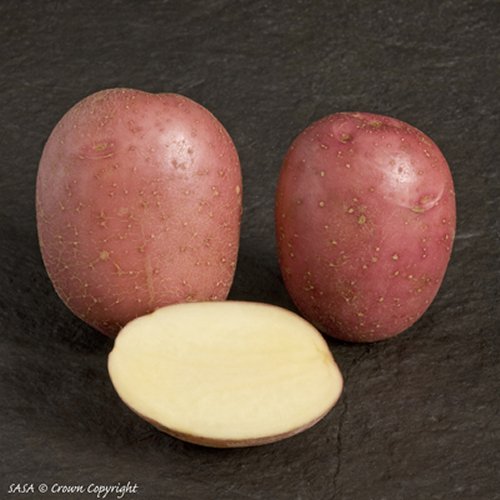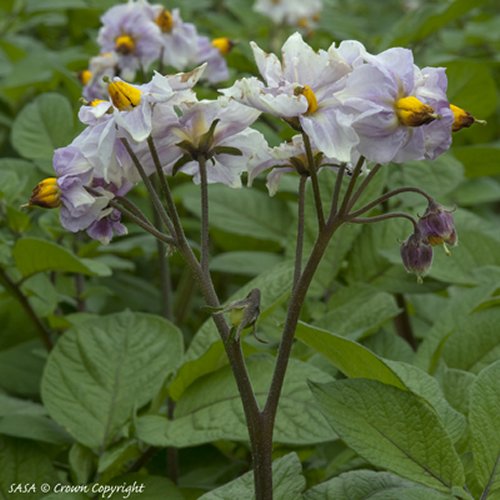The Setanta potato variety is Irish bred, the parents being Brodick and Rooster. When it was launched in 2010 the seed potato companies seemed to claim it was more blight resistant compared to Sarpo varieties like Sarpo Axona but independent tests show this to not be the case.

Setanta Potato
Setanta is a Maincrop potato variety which produces a very good crop of average sized oval potatoes of similar sizes. The skin is firm (it definitely needs to be peeled for most uses) with a red hue to it and the flesh is cream coloured. It is good for roasted potatoes, chips, and sauteing and has a very pleasant taste.
The eventual height of the plants is average for a Maincrop variety and they stand up to windy conditions well.
Setanta potatoes have slightly above average disease resistance with moderately good blight resistance. Because the skins are thicker than average, slugs tend to leave them alone. They store well and in the correct conditions will last for a couple of months.
Setanta potatoes should be grown in the normal manner for Maincrop potatoes. Click here for our detailed page about growing potatoes. We wouldn't advise growing them in containers.
Main crop potatoes like Setanta benefit little, if at all, from chitting. However, if you really do want to chit this variety, the best time is the first week of March in average areas of the UK. Comprehensive details about how to chit potatoes can be found here.
The best time to plant out Setanta potatoes is about the first week of April in average areas of the UK.
Planting out on this date will give the seed potatoes about six weeks before they reach the surface of the soil. Whilst they are growing towards the soil surface the sprouts will be protected from frost by the surrounding soil.
By the time they do appear above the soil, the danger of frost will have passed and the sprouts will not be damaged by frost. Comprehensive details about how to plant out potatoes can be found here.
As with all vegetables, the time for harvest is dependent on many factors such as the weather conditions while they are growing and the general soil conditions.
On average however you can expect to start harvesting Setanta potatoes in mid to late August in average areas of the UK.
Using the above date as a guide we would advise that a week before that date you use your hand to search through the soil to harvest one or two potatoes. The term often used for this activity is known in gardening circles as "furtling"!
It does almost no damage to the remaining potatoes but allows you to examine one or two of the potatoes to ensure they are of approximately the correct size. If they are, start harvesting, if not wait for one or two weeks and try again.

Setanta flower
Harvesting Setanta potatoes can be spread over three to four weeks and they can be stored successfully for a couple of months in the correct conditions. Comprehensive details about how to harvest and store potatoes can be found here.
An obvious competitor to Setanta potatoes is King Edward potatoes which are nearly as versatile. For other maincrop potatoes we have tested select one from the drop down list below.
IF YOU HAVE ANY QUESTIONS OR COMMENTS
CONCERNING THIS PAGE, ENTER THEM BELOW.
WE WILL ANSWER ON
THIS PAGE AS SOON AS POSSIBLE